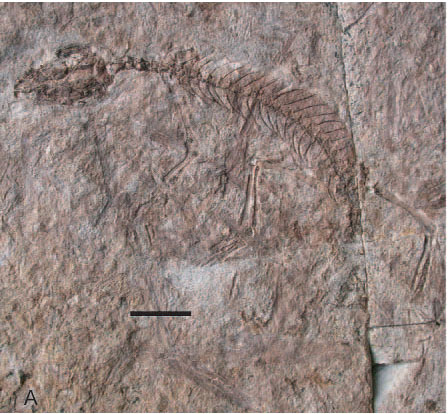Lizards are now relatively well known from the Jehol Group of northeastern China, seven taxa having been named from the group or equivalent horizons. Dr. Yuan Wang, Institute of Vertebrate Paleontology and Paleoanthropology, Chinese Academy of Sciences,and his collaborator, Dr. Susan E. Evans, UniversityCollegeLondon, recently described a lizard specimen from a fossil horizon at Daohugou of Ningcheng, Nei Mongol, which predates the Yixian Formation of the Jehol Group. This is the second lizard from this locality. Comparisons with ontogenetic series of modern lizards show that the new Daohugou lizard is a juvenile. The specimen is notable in having a slender body and relatively long limbs and extremities.

The Daohugou lizard (Squamata gen. et sp. indet., IVPP V 13747) in ventral view (Wang Yuan)
Even allowing for immaturity, its proportions differ markedly from those of previously described Jehol Biota lizards. Comparison with modern lizards suggests the new Daohugou lizard may have been at least partly scansorial. Its phylogenetic placement is problematic given its immaturity and preservation, but skull characters and vertebral number preclude attribution to Iguania and it may be a scleroglossan.
The original paper was published in VERTEBRATAPALASIATICA 47(1):21-34
|
